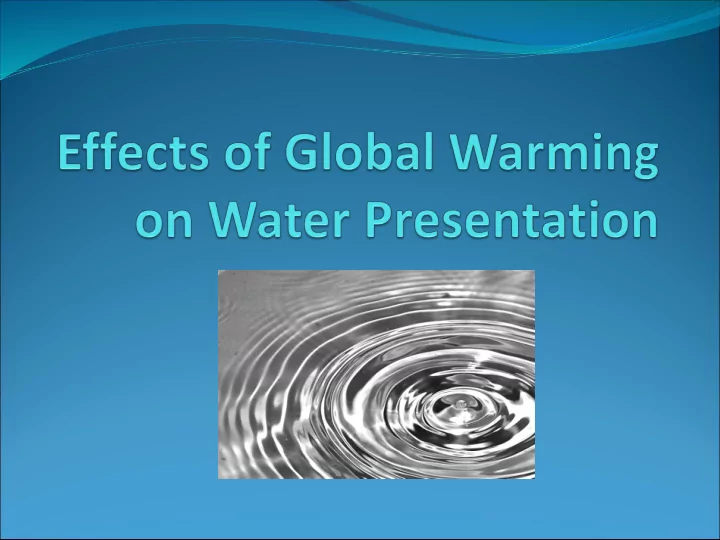

What is Happening to our Water? As a result of a warming climate monsoon rainfalls over the Indian Sub-Continent are becoming more intense, with more rainfall falling than ever before. 20% more intense in 2000 than in 1960. With the larger intensities of rainfall the extra water required are coming from Australia and Indonesia. With droughts and wildfires becoming more and more common there. With changing patterns of rainfall some areas are going to be more prone to flooding but some are going to be more prone to drought.
Impacts of Changing Water Patterns With changing water patterns and levels all over the world changing water levels will present many problems. The most severe problem is likely to be water shortages with sub-Saharan Africa, the Middle East and India likely to be the worst effected as a result of reduced rainfall and increased salination of groundwater especially in coastal zones as a result of rising sea levels. This will lead to 3 billion out of a population of approximately 9 billion being short of water by the year 2080 .
Impacts of Changing Water Patterns With 3 Billion people likely to be short of water by the end of the centaury many people are likely to turn to violence to ensure that they will have enough water for irrigation and drinking. This likelihood of increased conflict coupled with areas that already have tense political situations e.g. The Middle East potential serious conflict between the Israelis and Palestinians. With conflict many people are likely to flee warzones as refugees often to countries in Europe or the USA.
Impacts Changing of Water Patterns With water shortages many people will migrate northwards to Europe and North America to try and escape the problems that water shortages will cause in fact the UN predicts up to 100million could be displaced as a result of water shortages. As with all mass migrations this is likely to cause social problems in countries that lose and gain population as many will feel resentful to the newcomers and many countries who have lost population will not be able to cope with a sudden loss of population.
Solutions? As many scientists think that global warming enhanced by man by emitting CO2 is a main causal factor in extreme weather. One possible way to solve water problems is to simply cut CO2 levels through law and behavioural changes however it may take up to 50 years for the excess CO2 to be taken out of the atmosphere. Other solutions involve desalination plants built on the coast but these again require an input of energy usually from fossil fuels again making the natural hydrological cycle vary from the norm.
Recommend
More recommend